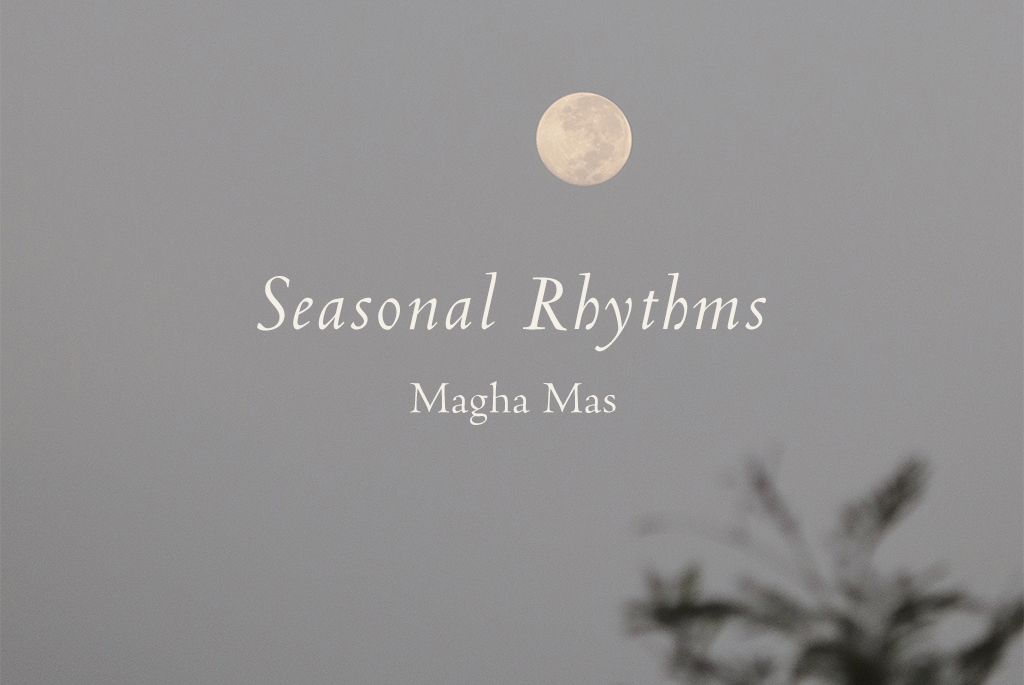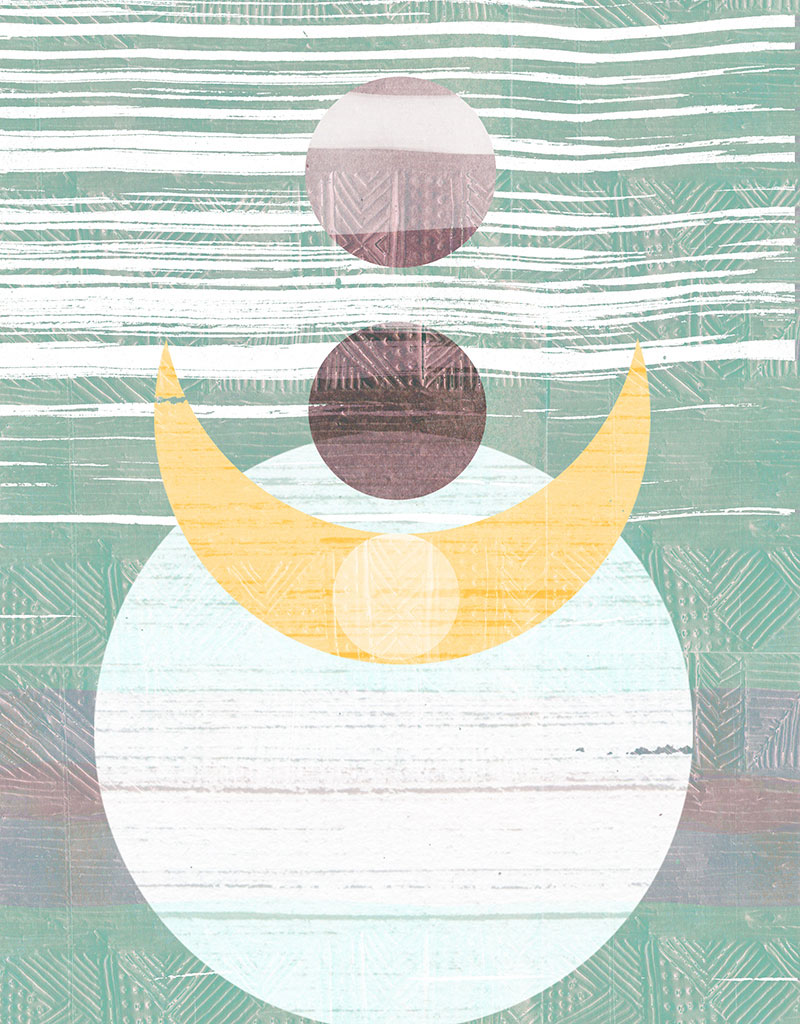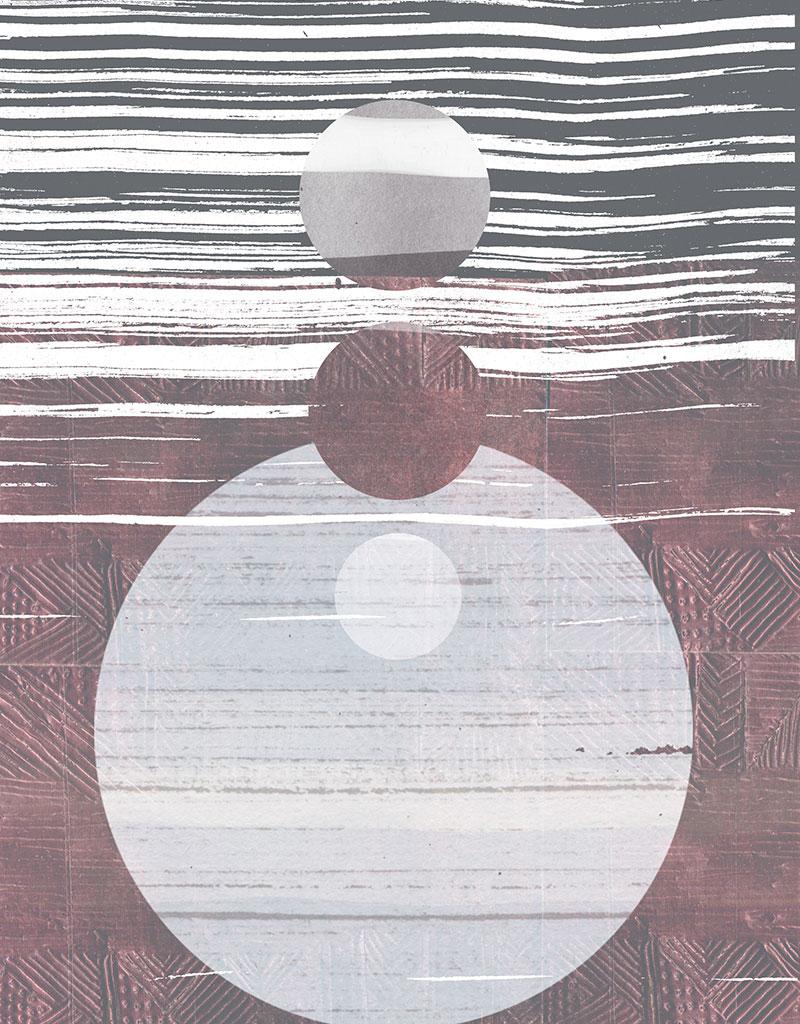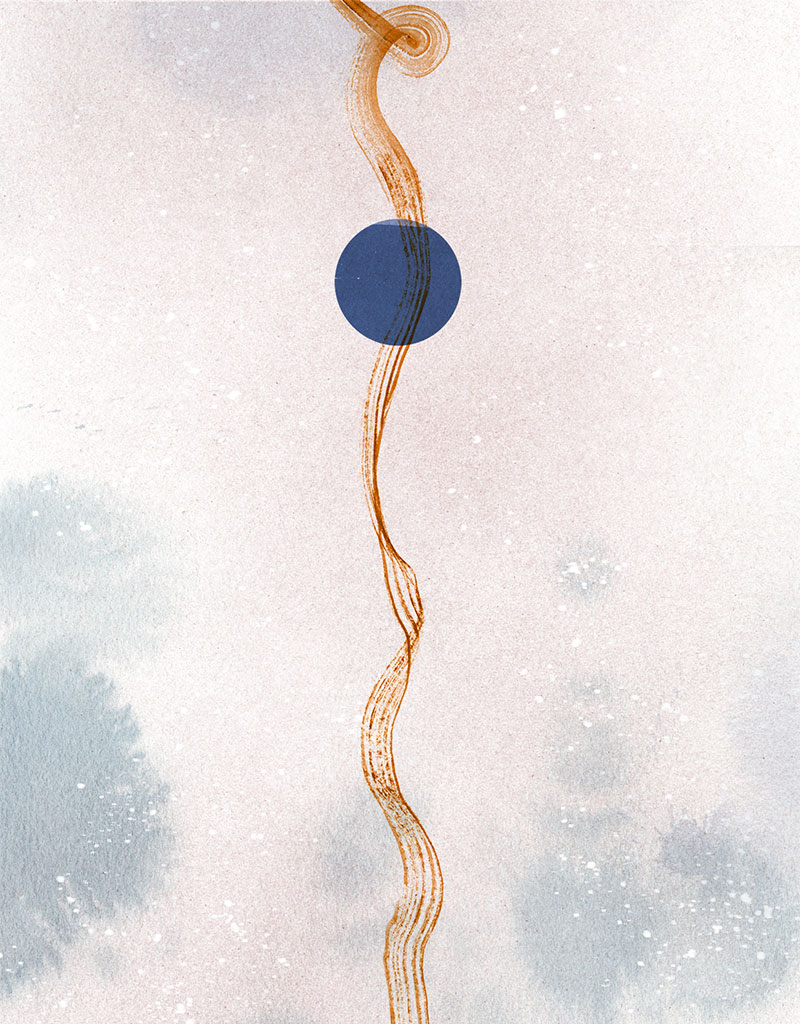Nilakshi Sharma

अवश्यायतमोनद्धा नीहारतमसा ऽवृता। प्रुप्ता इव लक्ष्यन्ते विपुष्पा वनराजयः॥
“The expanses of forest seem fast asleep, wrapped up in the darkness of hoarfrost, blanketed by the darkness of snow, with not a blossom open.”
Rāmāyana – trans by Sheldon Pollock
Magha mas brings with it the onset of the last rtu or season of the samvatsara (traditional Sanskrit name for the year in the Indian calendar).
Shishir rtu begins as an intensely cold time of the year in its first month of Magha. A blanket of fog shrouds the earth, veiling its vibrant colours. There is a quality of stillness and waiting to this month – because it is only when we reach the peak of winter that we can look forward to the oncoming shift towards warmth and colour. As Magha begins the upper regions are blanketed under snow, the Sun shines with a weak light that offers no warmth. The fresh rice and sugarcane and other grains have been harvested and now there is nothing but the wait for the earth to be sown afresh. From the mist shrouded river banks the cry of the Curlew and Herons can be heard but the birds themselves cannot be seen. And nature offers little by way of blooms or colours to beguile the heart and mind. Except for the proliferation of Kunda blossoms.
All the classical descriptions of the season celebrate this month and the season of Star Jasmine or Kunda’s beauty. One of the many varieties of Jasmine found in the subcontinent, Kunda’s origin is linked to the legends of Goddess Lakshmi. As befits a flower that is associated with Lakshmi, Kunda is beloved of Vishnu, Lakshmi’s consort. In classical literature Kunda, along with the Moon, was used as the marker of fairness. It was said, “Blooming in śiśira (Shishir rtu), the kunda withers at the onset of spring and is indeed one of the signs of the imminent change of season according to the Kāvyamimāṃsa.”
Magha then, is the month of a continuation of the interior practices that are recommended for all the four months of winter in the subcontinent’s traditions. The four months of winter (Margashirsha, Pausha, Magha and Phalguna) were once seen as the ideal time for turning inwards and nourishing and strengthening our bodies and minds with the right practices of self care, spiritual practices, foods that nourish and nurture our bodies.
Warming Rituals
- Abhyanga: Ayurvedic recommends Abhyanga, self massage with gently heated oil, as a daily ritual. But this practice is particularly good during the cold seasons. Using a warming oil like Mustard seed oil or Sesame oil is ideal for daily use at this time. Gently warm the oil and massage the body with long, slow strokes. Not only does the oil nourish the skin it also stimulates blood circulation. This practice is also excellent for pacifying any excess Vata in our bodies and helps us to feel more grounded and calmer. After the self massage bathe with warm water and instead of a soap use an ubtan or any other grain and clay cleanser for best results.
- Warming Tisane: By now all of us have succumbed to a flu or a cold or congestion. As per Dr Vasant Lad this warming tisane “will increase heat and Pitta, improve circulation and eliminate mucus from the system. However, if you have an ulcer please don’t drink this tea as it will be too heating.”
Dry Ginger powder ½ teaspoon + Cinnamon powder ½ teaspoon + Clove (either a pinch of the powder or half a Clove). Boil together with a cup of water for about 5 minutes. Strain and drink. Have a cup after breakfast daily for best results.
- Bedtime Ritual: A restful way to end the day on a warm note is to rub the soles of our feet with warm Mustard oil before going to bed. This will ensure better blood circulation, have a warming effect on the body and a calming effect on the nervous system. Traditionally rubbing the soles of our feet with Mustard oil is also thought to benefit our eyesight.
Rituals of Reflection
The still quietude of Magha is an ideal time to reflect, to rest and rejuvenate our bodies and minds with practices that allow us to turn our focus inwards. The eleventh month in the traditional lunisolar calendar, Magha is considered an auspicious month and thus supportive of spiritual practices.
Pranayama: This age-old practice that is the source of all modern breath work practices is ideal for keeping your body warm and your respiratory tract in optimal health. Pranayama practices such as Surya Bhedna, Bahstrika and Ujjayi are ideal for winter. But it is recommended that you learn each of these breathing techniques under the guidance of a qualified Yoga practitioner.
Mantra Meditation: One of the oldest and most traditional of Vedic practices, the chanting of Sanskrit mantras is also the root of most modern chanting practices. Mantra chanting is ideal for beginners. The emphasis on a repetitive chanting of a given mantra gently builds our capacity for a dedicated meditation practice. Sitting down daily, preferably at the same time every day and chanting our mantra for a predetermined number of times gradually allows our body and mind to ignore distractions and reach towards a place of stillness. Your mantra practice can be as simple or ritualistic and elaborate as you wish.
Traditionally a mantra is given by a guru but it is equally possible to choose one that you are drawn to. There is a vast repository of Sanskrit mantras to choose from – each mantra is aligned with a deity or a certain kind of energy, see which one resonates with you and start with that. As your practice deepens, you will be the best judge of whether you need another mantra or to continue with the one you started with.
Tratak Meditation: This traditional practice is one of the six Yogic Kriyas of cleansing. Loosely translated as Flame Gazing, Tratak is a meditation practice that involved gazing at a steady flame – ideally a diya (earthen lamp) filled with Ghee (clarified butter) and a handmade wick of cotton. Ensure that the lit diya is placed at eye level height and that there are no air drafts in the room. The steadier the flame, the better it is. It is ideal to learn the practice of Tratak meditation from a Yoga teacher. Among the benefits that nearly all forms of meditation bestow on the practitioner, Tratak is also thought to be very beneficial for the eyes and eyesight.
Magha, the coldest month of the year, also gives us the burst of beauty and hope that is celebrated as Basant Panchami. As per legends on this day, in the depths of winter, we get the first hint and taste of the oncoming season of Spring. The goddess who is honoured on this day is Saraswati. It is traditional to wear yellow-coloured clothes and make sweet yellow rice with Turmeric and Jaggery as an offering to her on Basant Panchami. It is said that from this day onwards the cold decreases incrementally every day. This year Basant Panchami comes on February 14.
May this month offer you all the delight of warmth and the delicate beauty of the Kunda blossoms.





